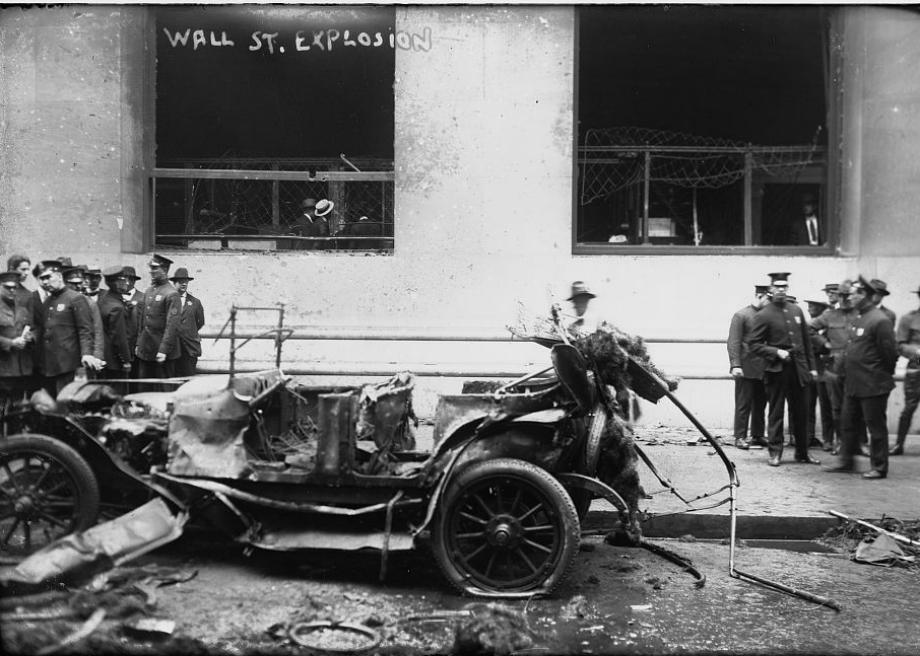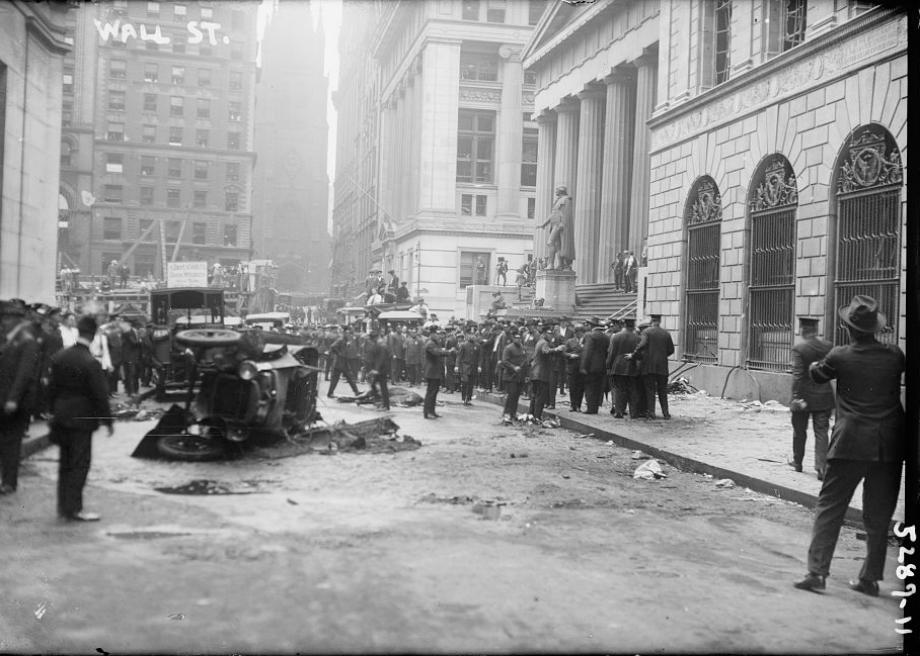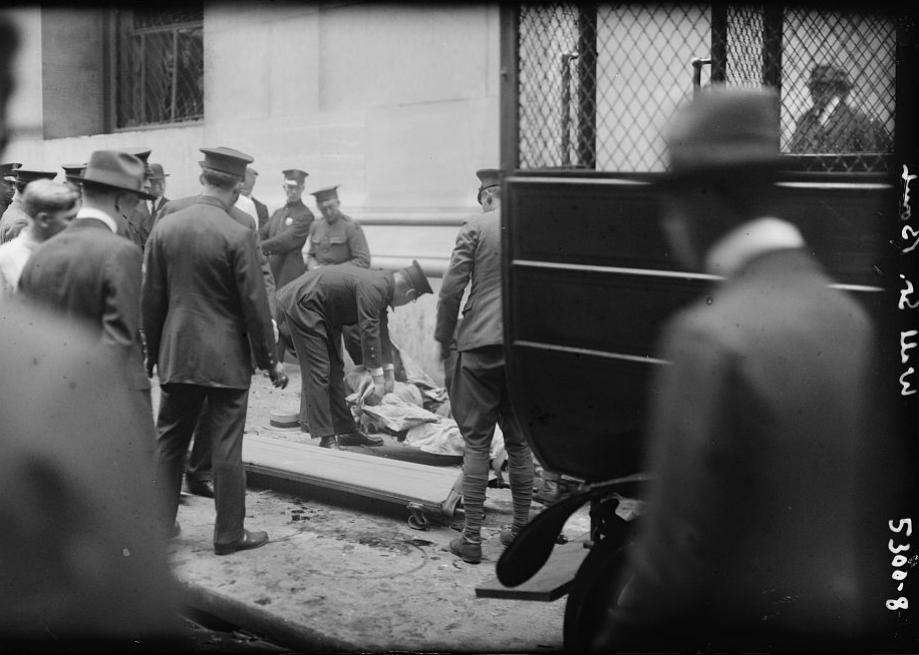The Wall Street Bombing: Low-Tech Terrorism in Prohibition-Era New York
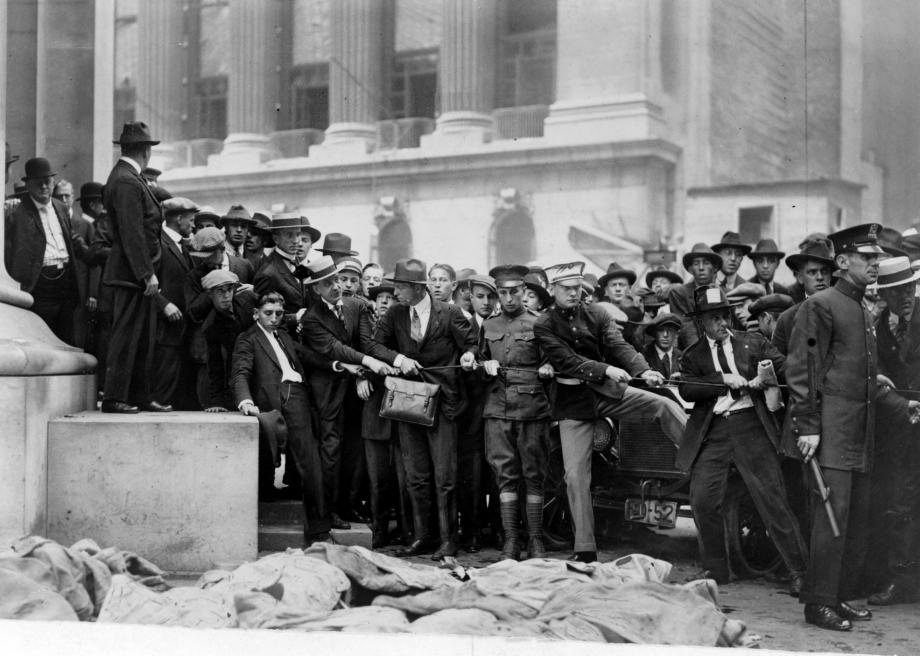
Atlas Obscura on Slate is a blog about the world's hidden wonders. Like us on Facebook, Tumblr, or follow us on Twitter @atlasobscura.
September 16 marks the anniversary of a horrific terrorist attack on Manhattan's Financial District. The perpetrators targeted a prominent building that also served as a symbol of American capitalism. But their method of attack was unusual. They did not hijack a plane or use suicide bombers with explosives strapped to their chests. They used a horse-drawn wagon.
The Wall Street bombing, as the event is now known, occured just after noon on Thursday, September 16, 1920. A wagon loaded with a bomb containing dynamite and 500 pounds of small iron weights parked in front of 23 Wall Street. The corner building was then the headquarters of J.P. Morgan & Co., the nation's most powerful bank. At 12:01 pm, the timer on the bomb reached zero and a terrific explosion rocked the street.
Thirty people—and one horse—died instantly from the blast. Another eight died later from the injuries they sustained. Hundreds were injured, some by shrapnel on the street, others by the glass that rained down from the broken windows of the J.P. Morgan building. The blast was so forceful that, according to a bystander quoted in the New York Times the next day, a trolley carrying passengers two blocks away was "thrown from the tracks by the shock."
No-one claimed responsibility in the aftermath of the attack, leading many on the scene to conclude that the perpetrators were communist agitators fresh from the Bolshevik Revolution. On September 17, 1920, the Times reported that "both the police and the government investigators were inclined to the theory that Reds had placed a time bomb in the wagon." Russians were the prime suspect in the eyes of John Markle, a wealthy anthracite coal field operator who happened to be at the J.P. Morgan building when the blast occurred. "[T]here is no question in my mind," he told the Times, "that the explosion was caused by Bolsheviki."
Not everyone, however, thought red was the color of guilt. Department of Justice agent Frank Francisco was reluctant to believe J.P. Morgan had been targeted and figured the explosion may have been an accident. The Times quoted him thusly: "If an attempt had been made on the Morgan offices, I believe it would have been made at night, or some radical would have secured a position in the institution and planted an infernal machine inside."
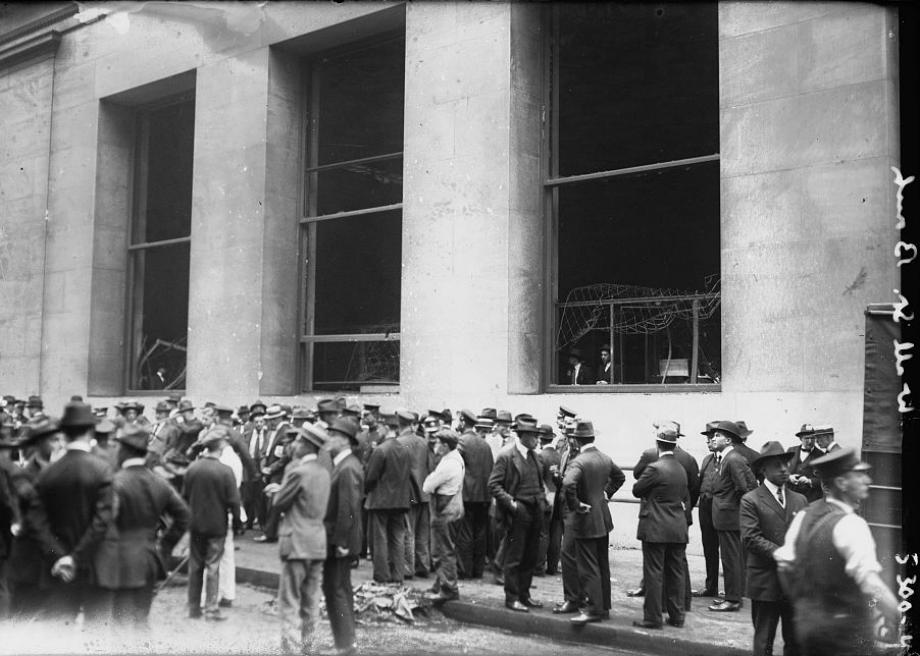
Photo: Bain News Service (Library of Congress)/Public domain
In their haste to reopen the New York Stock Exchange the day after the blast, city officials swept away evidence that may have led to identification of the perpetrators. Despite a three-year investigation, those responsible for the attack have never been officially identified. In 1944, however, the FBI revisited the case and concluded that Italian anarchists were likely behind the plot—the group had conducted a series of bombings across the United States in 1919, which fueled the nation's first Red Scare.
Today, the limestone acade of 23 Wall Street still bears the scars from the shrapnel that blasted into it 94 years ago. These little marks are the only on-site hint of the attack—no signs or plaques commemorate the bombing.

Photo: Ella Morton
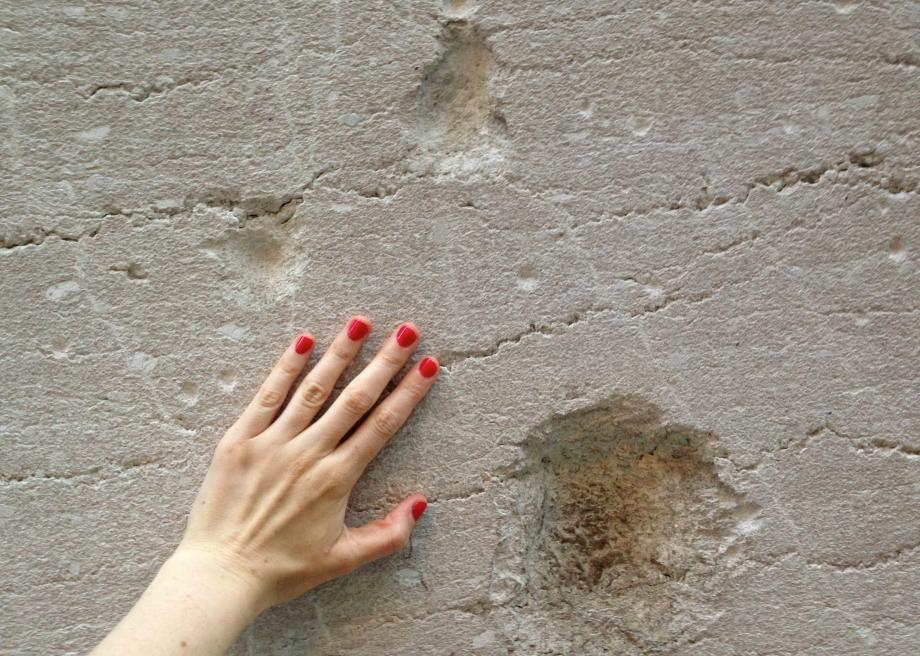
Photo: Ella Morton

